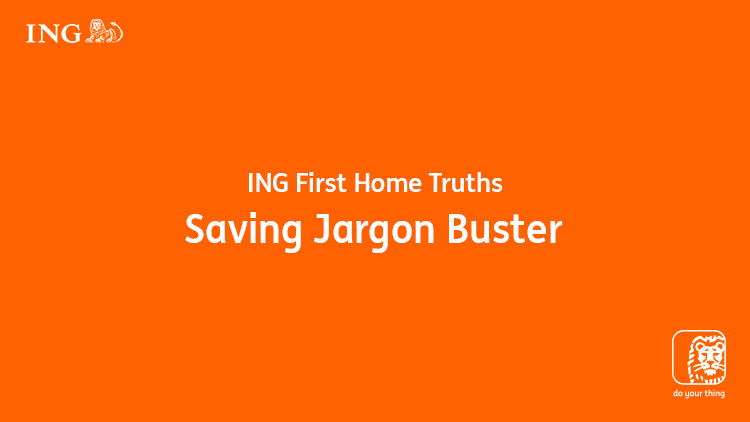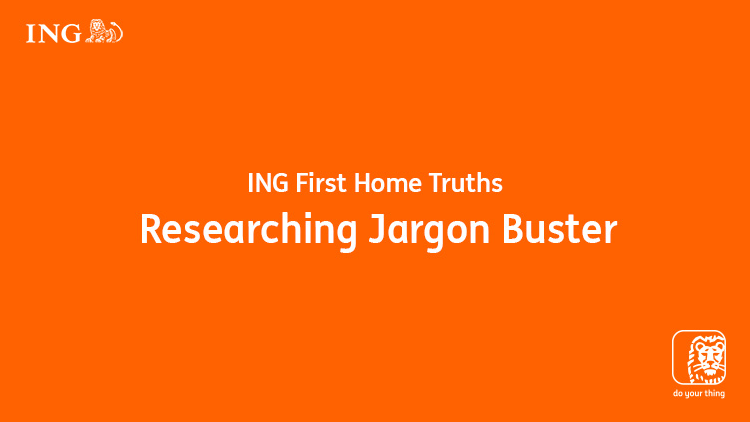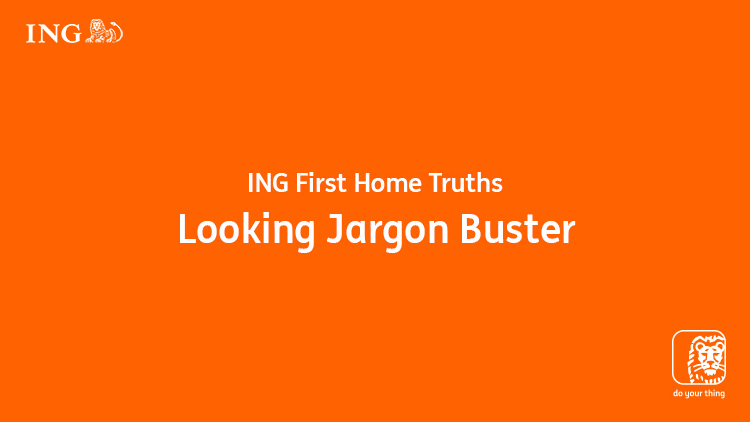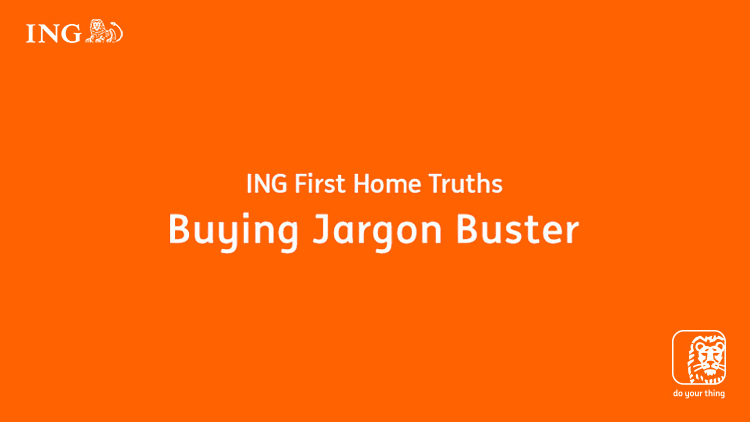
Talk borrowing like a pro with our home loan glossary.
Time to bust some jargon
Sooner than later you’ll be confronted with financial phrases, words and acronyms that simply don’t compute. Our handy home loan glossary will keep you up to speed.
Home loan glossary
Sharpen your borrowing vocab with our home loan glossary.
A – C
A
Appreciation vs depreciation
Appreciation and depreciation are as basic as the concept of up and down. In the world of homes and appreciation is when a property’s value goes up. Depreciation is when it goes down.
Assets and liabilities
A car, a boat, your savings, your home – anything you own that’s of value and can be an asset. A liability is money you owe to someone else, like a car loan, credit card debt or a personal loan. When you’re going for a home loan, lenders like us will look at your assets and your liabilities in working out your financial situation.
Auction
An auction is one way of buying a property. The other way of buying a property is by private treaty sale. At an auction sale, all interested parties are invited to bid for the property in real time by saying how much they’re willing to pay for the property. Whoever makes the highest bid wins. That said, for the highest bid to be successful, it needs to reach the reserve. This is the price at which the seller will sell the property for. The reserve is not usually disclosed before the auction. Typically, there’s no cooling-off period for auctions. So if you’re bidding at an auction, make sure it’s the right home for you because a winning bid is legally binding and penalties may apply if you pull out. Generally speaking, a 10% deposit is expected to be paid upon a successful bid with an execution of a contract of sale (unless you’ve been able to negotiate a lower deposit through your conveyancer, prior to the auction).
B
Body corporate and strata fund
Be sure to get a strata report if you’re looking to buy within a strata scheme (these are most common with units, villas or townhouses). The report includes a history of the building, the financial status of the strata scheme, pending building works and special levies, minutes of strata meetings and past works history. You may even want to consider having your conveyancer looks over these documents.
Buying a unit, villa or townhouse in a strata scheme is different from buying a house. The strata scheme is run by the owners corporation (sometimes known as the body corporate) which is made up of all the owners of the strata scheme. The owners corporation is responsible for the upkeep and maintenance of the common property (eg: lobby, lifts, car park and gardens). It may appoint a strata manager to collect the strata levies, pay invoices, organise strata meetings and arrange for the day-to-day running of the complex.
As an owner, you may be required to pay regular strata levies to contribute to the cost of the maintenance and upkeep of the building and common property and amenities, building insurance and repairs.
There are three types of strata levies, all of which are normally invoiced quarterly. The administrative fund levy covers the day-to-day expenses of the strata scheme (eg: cleaning, building insurance, utility bills for common property and small repairs). The sinking fund levy provides for larger capital expenses that the scheme may have to pay for (eg: larger repairs and replacements). A special levy is sometimes required to cover an unexpected expense over and above what’s in the sinking fund.
Break cost or break fee
A fixed interest rate loan has the advantage of giving you the certainty of knowing exactly what your repayments will be for the term that you choose. However, if you break the fixed rate term early, switch to a variable rate during the fixed rate term or make extra repayments into your fixed rate loan totalling a certain amount (determined by your lender), break costs may be payable. Break costs (or break fees) are based on the loss which a lender suffers if you choose to break your fixed interest rate loan contract. This loss is passed onto you. The way it’s calculated can be complicated – too complicated to fit here – but it depends on your individual loan and the broader interest rate market. Break fees can be substantial and you should ask for an indicative payout figure and get accounting or financial advice before proceeding to break your fixed rate home loan.
C
Capital gains
A capital gain is the profit you make on the difference between what you paid for an asset (like shares, your home) and what you sold it for. This takes into account any incidental costs on the purchase and sale.
Capital gains tax (CGT)
Capital gains to the max? You might have to pay tax. If you make a profit from selling an investment property (eg: a home you don’t actually live in, or only lived in for part of the time, and from which you received an income), you may need to pay capital gains tax (CGT). The good news is that this tax doesn’t usually apply to the sale of your principal place of residence – that is, your own home (unless it was used as an investment property at some stage). CGT applies in the financial year you sell the investment property and will need to be reflected in your tax return for that year. It can be substantial and you should consider getting professional advice.
Comparison rate
A comparison rate helps you work out the true cost of a home loan. It’s a percentage that combines a loan’s interest rate with most of the upfront and ongoing fees you can expect to pay so you can compare (ah!) the rates offered by different home loan lenders and choose which one to go with. All lenders in Australia (like us) are legally required to show you a comparison rate alongside an interest rate. For a home loan, lenders generally calculate it using the standard example of a $150,000 loan over a 25-year term. And FYI, the types of fees that the comparison rate considers are application fees, annual or monthly account-keeping fees and discharge fees. It doesn’t take into account uncommon things like early repayment fees or redraw fees.
Conditional offer
A conditional offer is an offer to buy a property that depends on something else happening for the sale to go ahead. Common conditions include loan approval from the bank or the outcome of a building inspection or pest report. Conditional offers are normally only made for private treaty sales and not generally for auctions. Tip: other buyers you’re competing against may make offers for the same property without any conditions on their end, so consider how important your conditions are.
Contract Of Sale
A Contract of sale is a legal document that covers every aspect of a property sale which varies state to state. It is generally prepared by a real estate agent or qualified conveyancer /solicitor and outlines any specific terms of the purchase such as the property price, the cooling off period or any inclusions/exclusions (such as as dishwasher or garage). Some things on the contract of sale can be negotiated depending on your purchasing needs including the length of the cooling off period, settlement period or what fittings are included in your new property. It is important to view and understand everything on this document before you decide to buy- engage your conveyancer or solicitor to make sure you know whats what before commiting to a purchase.
Cooling-off period
A cooling-off period is a period of time in which you can change your mind after you’ve committed to buying a property. But, heads up: a cooling-off period generally doesn’t apply to properties bought at auction – when contracts are exchanged on the same day. It’s more common in a private treaty, but here too the seller may ask that the cooling off period is waived. Another FYI: if you do cool off, you’ll likely forfeit a percentage of the purchase price. The amount forfeited (generally about 0.2%) and the length of the cooling-off period is different in each state, so check your local rules.
Conveyancing
Buying a home involves a bunch of contract paperwork to legally transfer the ownership from the person selling it to the person buying it. This is when a legal professional like a conveyancer, lawyer or solicitor steps in to do what’s known as the conveyancing. They work with you (the buyer), the sellers conveyancing team and your banks legal team. Basically, they help dot the i’s and cross the t’s to make sure the transfer goes smoothly.
D – F
E
Exchange of contracts
Exchanging sale contracts is the legal part of selling and buying a home. This is common in NSW but you should check the requiremerns for each state or territory your purchasing in, or your conveyancer can help with understanding what’s required. Until sale contracts are exchanged, the seller is not legally bound to sell the property to you. This is when a legal professional like a conveyancer, lawyer or solicitor steps in to faciltate the exchange of contracts. Basically they help dot the I’s and cross the t’s to make sure the exchange goes smoothly. Settlement is the conclusion of the sale transaction and usually takes place some weeks after sale contracts are exchanged. On exchange of contract your 10% deposit (or less if you’ve negotiated this) is payable and is generally non-refundable after the cooling off period has expired (if you have one as part of your contract negotiations. Keep in mind not all vendors will agree to having a cooling off period).
F
Fixed rate loan
A fixed rate loan is based on an interest rate that stays the same no matter what the market interest rates do. This means that your loan repayments will generally stay the same for the term of the fixed rate loan. After the expiry of your fixed rate loan term – between 1 and 5 years – you will generally go onto a standard variable rate. You can then review your loan and decide if you want to re-fix for a new term, or stay on a variable rate depending on what your lender is offering at the time or your own circumstances.
G – I
G
Guarantor
If you don’t have enough money for the deposit to buy a home, a related party such as a family member as an example could act as a guarantor on your loan. A guarantor is responsible for paying back the entire loan plus interest if you don’t or can’t. Although the property being purchased will normally be used as the main security for the loan, the guarantor’s property provides additional security to the lender.
There are benefits to having a guarantor, such as not having to save a large deposit and avoiding having to pay for lenders mortgage insurance (LMI) if the loan to value ratio can be brought below 80%.
But asking someone to provide a guarantee is a big ask because if you can’t make the repayments, the lender can repossess their home if it was used as security for the loan. There may be other ways to help. For example, the person might be able to contribute some money towards a house deposit instead.
I
Interest-only repayment
An interest-only repayment is when you make a payment towards only the interest portion of your home loan. Normally, a standard loan repayment includes both the principal (the amount you’ve borrowed) and the interest (the amount the lender charges on your balance). Keep in mind that when you pay interest only, you’re only repaying the interest part of your loan, so your repayments won’t reduce your principal balance. Generally lenders will only allow borrowers to be on Interest Only loans for a set period of time such as 5 years, on Owner Occupied properties and 10 years on Investment properties.
L – N
L
Loan-to-value ratio (LVR)
LVR is the Loan to Value Ratio used by lenders when determining how much you can borrow. LVR is calculated by dividing the loan amount by the value of the property. So if you borrow $800,000 for a home valued at $1,000,000, the LVR would be 80%.
Lenders mortgage insurance (LMI)
Lenders Mortgage Insurance (LMI) is designed to protect the lender (not the borrower) if the borrower can’t repay their loan. It’s normally required when a loan amount is more than 80 per cent of the property’s valuation. LMI is a common one-off cost which can normally be added to the home loan or paid upfront if your deposit is less than 20%. The amount of LMI you pay varies by lender and depends on how much you borrow and the size of your deposit.
M
Mortgage protection insurance
Mortgage insurance, also known as home loan insurance or consumer credit insurance, protects a borrower from the risk of default. It’s designed to cover mortgage repayments in the event of death, critical illness or total and permanent disability. It may also offer cover in the event of redundancy.
Mortgage insurance does have a limit on the length of time you’ll receive cover for. You should also check to see if you already have cover for your mortgage repayments in another policy; for example, a life insurance policy or income protection insurance as part of your super. It’s entirely optional. The cost depends on things like the loan amount, your age, how large your repayments are, and whether the loan is single (in one name only) or joint (say if you and your partner have gone in on the loan together).
O – Q
O
Offset account
An offset account is a transaction account linked to your home loan which could reduce the interest you pay on your home loan. The money in the offset account is ‘offset’ against your home loan balance. But what does this mean, exactly? With an offset, you’ll only be charged interest on your loan balance as if the loan balance was reduced by the amount you have in your offset account. In other words, interest charge is calculated on the net balance of these two accounts. For example, if you have a loan balance of $350,000 and $50,000 in your offset account, you’ll only pay interest on $300,000 of your loan balance.
You can make deposits (eg. your salary) into or withdraw funds from an offet account in the same way you would any other transaction account. Also, the interest you save by using an offset account could reduce your loan balance which means less interest is paid.
Interest on your loan is calculated daily, so the more you have in your offset account on any given day, the less interest you’ll be charged. Generally speaking, the offset feature is only available on variable rate home loans (although some lenders may offer an offset feature on some fixed rate home loans).
Most lenders will charge a fee for an offset account. You should check whether the amount of interest you’re likely to save will be more than the fee.
P
Principal and interest
Principal and interest are the two main components of home loan repayments. The principal is the initial amount you borrowed. The interest is the cost, calculated as a percentage, that the lender charges you for borrowing the principal amount.
Principal and interest loan
With a principal and interest loan, each time you make a loan repayment, you are paying interest and also part of the amount borrowed (principal) at the same time.
An advantage of a principal and interest loan is that you pay less interest over the life of the loan and you could pay off your loan faster than an interest only loan. Generally speaking, repayments are higher than interest only loans and a principal and interest loan may not be as tax-efficient for investment loans.
Private treaty
If a property isn’t going to be sold at an auction, it’s probably a private treaty sale. A private treaty is when a seller or agent lists a property for sale at an asking price or within a price range. Keen buyers then make their offers to the seller or the agent. The seller will normally accept the highest offer but this sometimes depends on whether there are any conditions attached to the offer (eg: subject to loan approval) or whether the purchaser is willing to waive or reduce the cooling off period. Private treaty sales aren’t legally binding until the contract of sale is signed and exchanged (for those states and territoires where this is part of the sales process, remember to confirm with your conveyancer or solicitor).
R – T
R
Redraw
Redraw allows you to withdraw any extra funds you’ve paid towards your home loan over and above your minimum required payment. It’s the difference between your current balance and what the balance would have been had you not made any additional repayments. Not all, but some, home loans allow you to make extra payments over and above the minimum. Some lenders place limits on the amount and number of times you can redraw, and may charge fees to redraw.
The advantage of having extra funds in a redraw is that it reduces the balance owing on your home loan – which means you’ll be paying less interest on your home loan.
Reserve price
A reserve price is the minimum price a seller will accept for their home at auction. If the reserve price isn’t reached through bidding, the owner has the right to withdraw the property from sale or enter into a private treaty with potential buyers.
S
Settlement
Settlement is the process of transferring a property’s ownership from a seller to a buyer. It usually takes place between 30 and 90 days after the exchange of contracts, and it includes your lender transferring the amount the sale proceeds less the deposit paid to the seller and getting the keys to your new home. Your lender will make sure all funds are available and are ready to be transferred to the selling party on settlement date.
Serviceability
Serviceability is an assessment the lender (like us) needs to work out if a borrower (that’s you) can meet their loan repayments. It’s based on the loan amount required and the borrower’s income and expenses, assets and liabilities, and other financial commitments.
Split loan
A split loan is where your home loan is split into two parts (or more in some instances), as an example you might choose one part to be on a fixed interest rate and the other on a variable interest rate. It can give you the security of a fixed rate with the flexibility of a variable rate. So you might want to take up a split loan if you want the certainty of a fixed rate but also want to take advantage of offset and redraw features which are usually only available for variable rate loans.
Stamp duty
Stamp duty is alevy that state governments charge you for buying dutiable assets, like real estate (aka your home). The amount you pay is based on the purchase price, State (as it is levied by the State and can vary from one State to another) and loan purpose. Some Australian States offer stamp duty exemptions for people buying their first home, so check what applies in your State.
Strata report
A strata report is a report you can purchase from the strata company when buying a unit, townhouse or an villa (a body corporate or strata scheme building) to find out what it’s like to live in, how it is managed, even whether or not your neighbours get along. A strata report will also give you a picture of how well maintained the building is (remember to check with your solicitor, lawyer or conveyancer to read over the report). You can request these reports through the real estate agent or your conveyancer, lawyer or solicitor can also organise for you to purchase these from the vendors body corportate or strata company.
U – W
U
Upfront costs
Upfront costs are the ones you pay to buy a property, along with the deposit amount. They can include stamp duty, solicitor or conveyancer fees, building inspections, pest reports (in some instances the vendor will pay for and provide these), strata reports, moving costs, insurance, and more. Check out our first home guide for more information.
V
Variable rate loan
A variable rate loan has an interest rate that changes over time in response to changes in the broader interest rate market. Lenders may increase or decrease the interest rate of your loan in response to decisions made by the Reserve Bank of Australia, as well as other factors. If the interest rate goes up, your required minimum repayment amount will increase and if it goes down, it will decrease.



